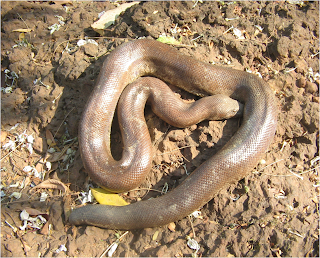- This 4 years old female is a victim of Treacher-Collins syndrome.
- Multiple facial anomaly including hypoplastic ears, anti-Mongolian eyes, mandibular facial dysosteosis , micrognathia, and choanal atresia were noted at birth.
- Due to dyspnea and poor feeding, the patient was send to pediatric department.
- Endo-trachea tube intubated for pneumonia was done at that time.
- Because of extubation difficulty, tracheostomy was performed on 1987-11-28.
- Distraction of mandible has performed twice on 1991-4-26 and 1991-11-29.
- This time, for the purpose of remove tracheostomy, choanal plasty and stenting were arranged on1992-4-15.
History of the patient
Treacher-Collins syndrome with
a. Micrognathia s/p distraction twice.
b. bilateral microtia with hearing aid.
c. PFO and PDA
d. bilateral Choanal atresia s/p tracheostomy.
Family history: denied.
Treacher-Collins syndrome
· What is treacher-Collins syndrome?
- It is a condition in which the cheek bones and jawbone are underdeveloped.
- Dr. Treacher Collins, a British ophthalmologist, was the first one who described the syndrome in 1900.
- Franceschetti and Klein, who extensive reviewed the essential components of the condition, used the term mandibulofacial dysostosis to describe the clinical features.
- Treacher Collins-Franceschetti syndrome 1 (TCOF1) was the other named of the syndrome.
Why and how does Treacher-Collins syndrome happen?
There are two possible ways that the syndrome develops:
1. Develop as a new mutation.
2. Inheriting it from one of the parents.
The incidence of the syndrome is about 1 : 10000~1 : 50000
Why and how does Treacher-Collins syndrome happen?
o The syndrome is an autosomal dominant disorder.
o The gene mutated in this syndrome was mapped at 5q32-33 initially.
o Two apparently balanced translocations, t(6;16)(p21.31;p13.11) and t(5;13)(q11;p11), and two interstitial deletions, del(4)(p15.32;p14) and del (3)(p23;p24.12)
Clinical features and diagnosis of the syndrome
- The anomalies was due to the defects of the first and second branchial arches, clefts, and pouches during early embryonic development :
- Abnormalities of the pinnae which are frequently associated with atresia of the external auditory canals and anomalies of the middle ear ossicles. Bilateral Conductive hearing loss is common.
- Hypoplasia of the facial bones, especially mandible and zygomatic complex.
- Antimongoloid slanting of the palpebral fissures with colobomata of the lower eyelids and a paucity of lid lashes medial to the defect.
- Cleft palate.
- The clinic features are usually bilaterally symmetrical, and the non-penetrance is rare.
- But due to the expression of the gene is extremely variable, the diagnosis and subsequent genetic counseling may be very difficult.
The minimal diagnostic criteria for the syndrome
- 40% of cases have a previous family history.
- Cranio-facial radiographs, particularly the occipito-mental view.
- Chromosome and gene exam.
What problems can be expected?
The most common difficulties involve:
- Breathing
- Hearing
- Vision
The reasons that may cause breathing problems:
- Small or undeveloped jaw
- Cleft palate and choanal atresia
- Tongue drop
- Pharyngeal hypoplasia
- Dyspnoea while developing colds and infections due to congestion and swelling of the airway.
- Sleep apnea – affect the child’s mental development.
- Speech therapy was needed.
The role of an anesthesiologist
This doctor is a very important part of any craniofacial team. Children with craniofacial problems often have problems associated with the airways that create breathing difficulties. It is essential that this doctor be well trained in pediatric anesthesiology, but it is just as important that he/she have substantial experience in dealing with these special children. The pediatric anesthesiologist’s amount of experience with craniofacial problems perhaps has the greatest effect on the overall safety of the surgery.








































